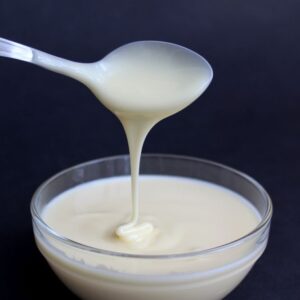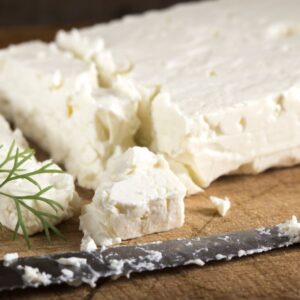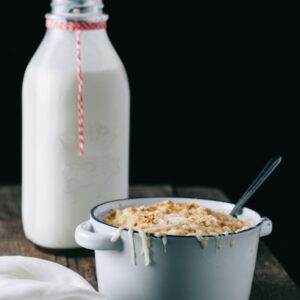When you run out of dry mustard, you can stop cooking and run to the nearest store to buy some, or use a substitute.read on to discover The Best Substitutes for Dry Mustard in Cooking.
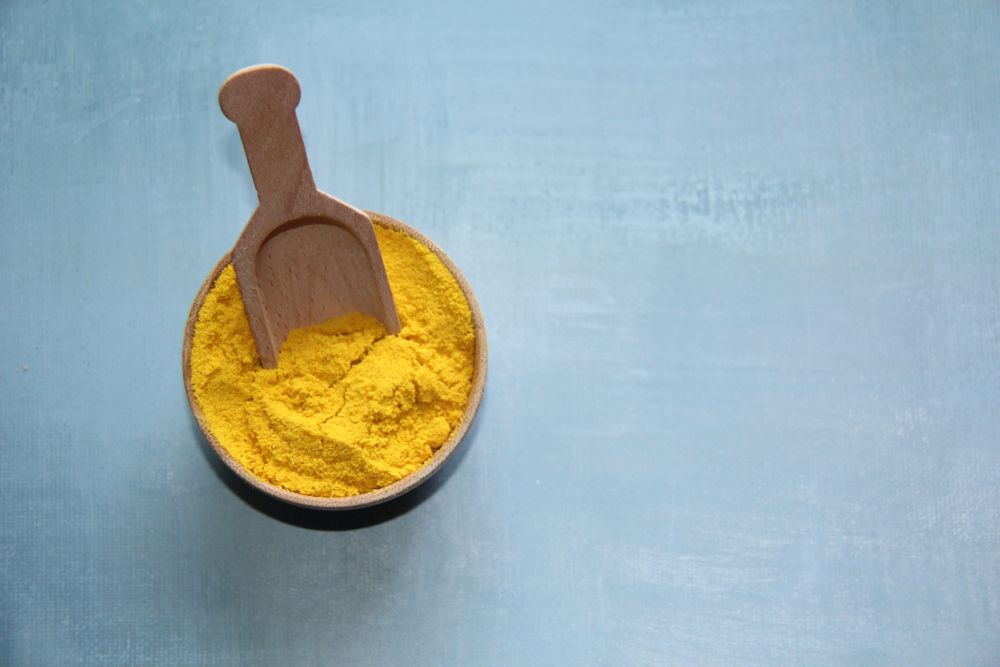
Before looking for dry mustard substitutes, here are some fun facts about this culinary ingredient:
- Dried mustard is a type of mustard seed that has been dried and powdered.
- It is also known as mustard powder or mustard powder.
- Dry mustard has a pungent, slightly bitter flavor that can add a hint of spice and heat to dishes.
- It’s high in antioxidants and contains compounds linked to various health benefits, including reducing inflammation and improving digestion.
- Dry mustard is often used to flavor dishes like deviled eggs, potato salad, and BBQ sauce.
- Homemade condiments such as mustard and mayonnaise may often contain dry mustard.
- Dried mustard can keep for up to two years if stored properly in an airtight container in a cool, dry place.
This article discusses the best substitutes for dry mustard: Mustard seeds, Dijon mustard, yellow mustard, stone ground mustard, horseradish, mustard powder, and a blend of turmeric powder and paprika. Read on to discover more about each option. You can also review the FAQ section below.
1. Mustard Seeds
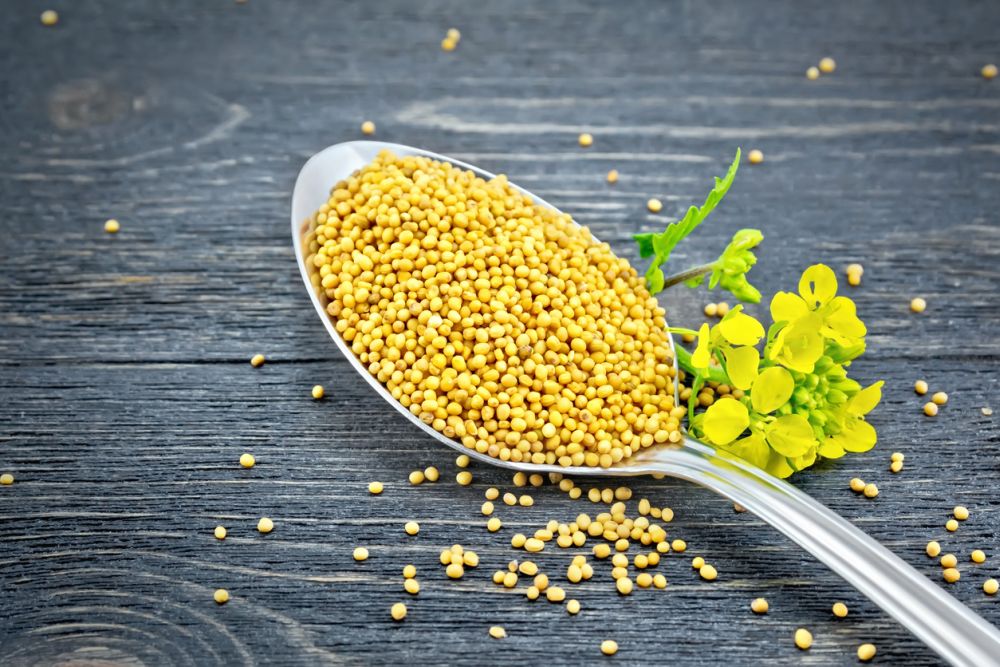
Mustard seeds are an excellent substitute as dry mustard is obtained by grinding these seeds into a powder。 To reduce seeds to powder, use a mortar and pestle, spice grinder, or coffee grinder. Before grinding the seeds, toast them in a heavy pan until they pop to bring out their flavour.
Using ground mustard seeds is a near-perfect substitute for dry mustard because you can use this ingredient in the same dish. However, it’s important to adjust the substitution ratio, since crushed seeds pack more punch than dry mustard. Use a 1:2 ratio when using ground mustard seeds instead of dry mustard. For example, if a recipe calls for 1 tablespoon dry mustard, use 1/2 tablespoon ground mustard seeds.
2. Dijon mustard
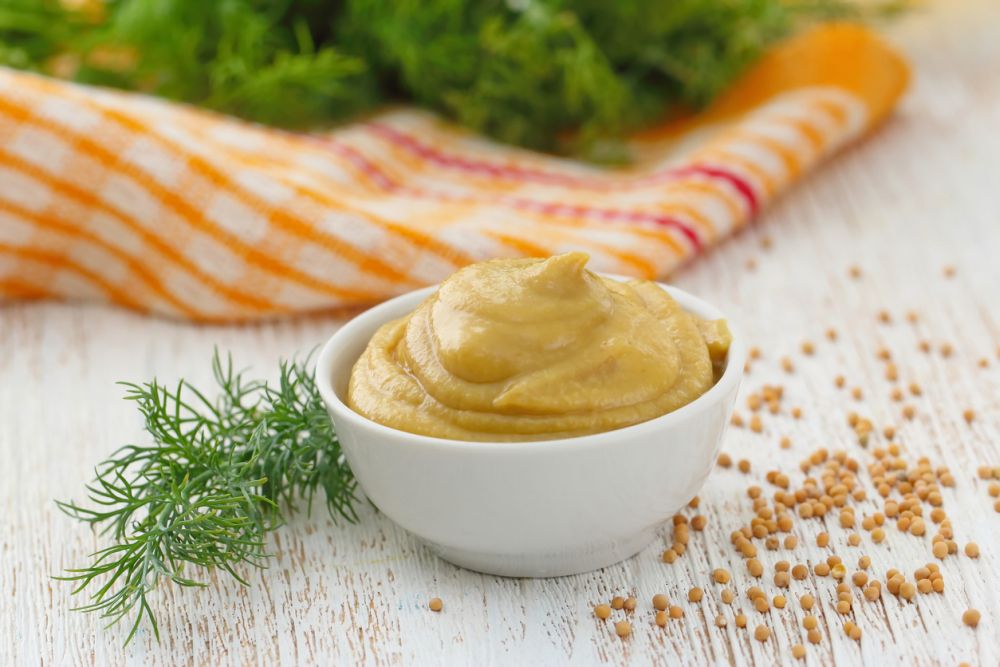
Dijon mustard is a great substitute for dry mustard as the two are very similar. It is made by grinding brown and black mustard seeds and mixing them with vinegar and sometimes wine. Dijon mustard is tangy and slightly sweet; it is milder and has a smoother texture than dry mustard. The main difference between the two is that Dijon mustard is wet, so you can use it in recipes that don’t depend on the dryness of the mustard powder. For example, use Dijon mustard as a dressing for sandwiches or as an ingredient in salad dressings, marinades and sauces. However, Dijon mustard is not suitable for dry rubs or spice blends.
Since Dijon mustard has a milder flavor than dry mustard, you can use it more freely in recipes. For example, If the recipe calls for 1 teaspoon dry mustard, use 1 tablespoon Dijon mustard.
3. Yellow mustard
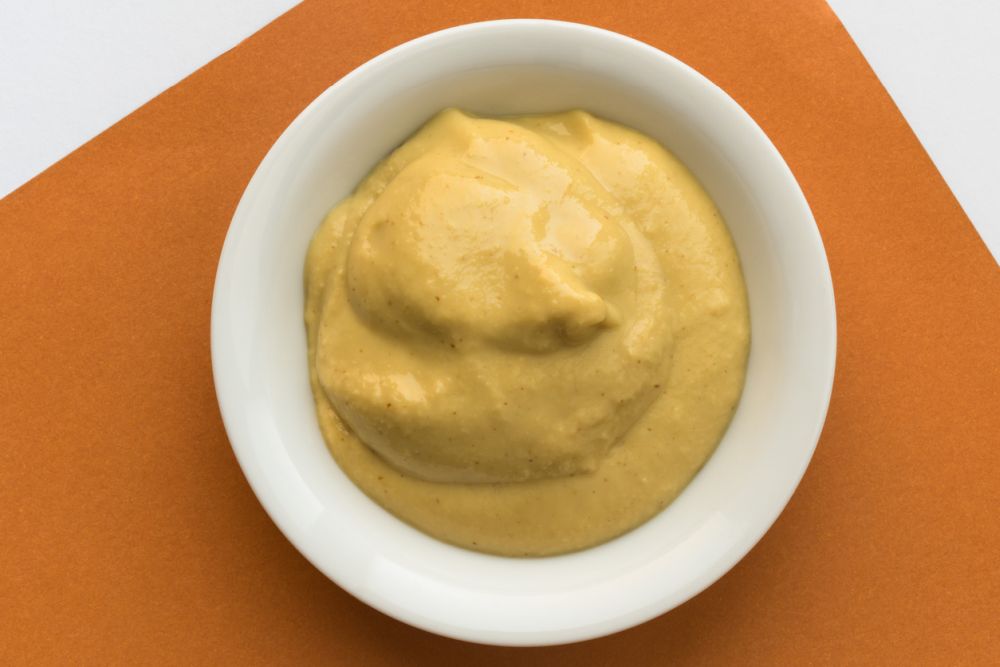
Yellow mustard is a good substitute for dry mustard if you have no other optionsBoth have different flavor profiles; yellow mustard is less spicy and contains more ingredients such as vinegar, water and other seasonings. Yellow mustard is often used as a topping for hot dogs or sandwiches.
When substituting yellow mustard for dry mustard, start with a pinch and add more for flavor. Since yellow mustard contains extra ingredients, you may need to reduce them from your recipe, especially the spices.
4. Stone-ground mustard
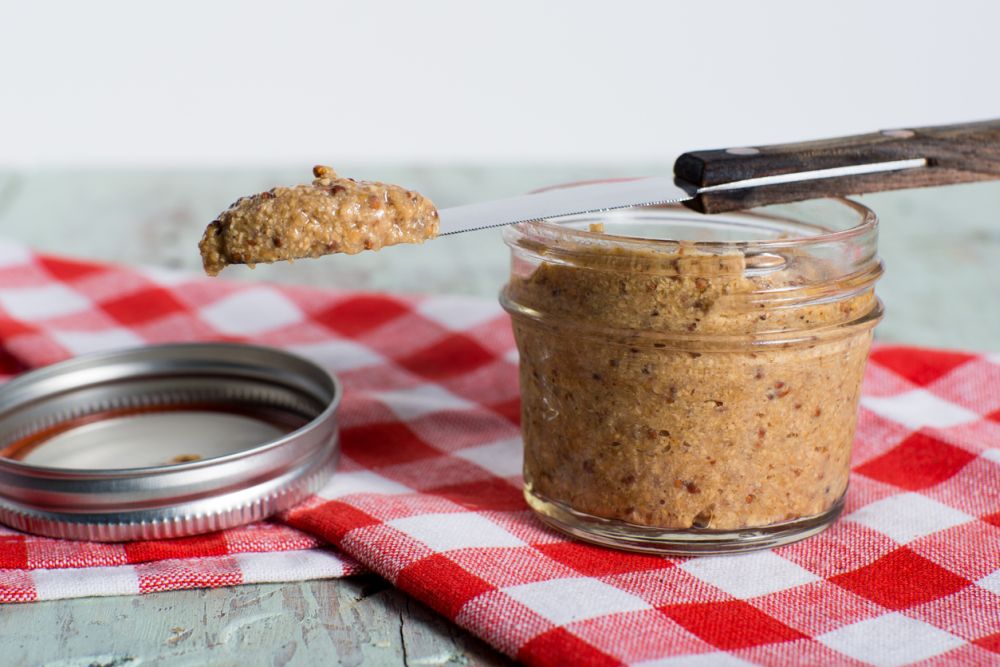
Stone ground mustard is another good substitute for dry mustard as they have a different taste and texture。 Stone-ground mustard is made by grinding whole mustard seeds with other ingredients such as vinegar, water, and spices. This produces a thick and slightly chunky texture with a strong spicy flavor. Ground mustard is often used as a dressing for sandwiches, meats, and cheeses.
Similar to yellow mustard, stoneground mustard has a less sharp flavor than dry mustard because it is diluted with liquid ingredients. When substituting ground mustard for dry mustard, start with a pinch, taste and add more as needed.
5. Horseradish
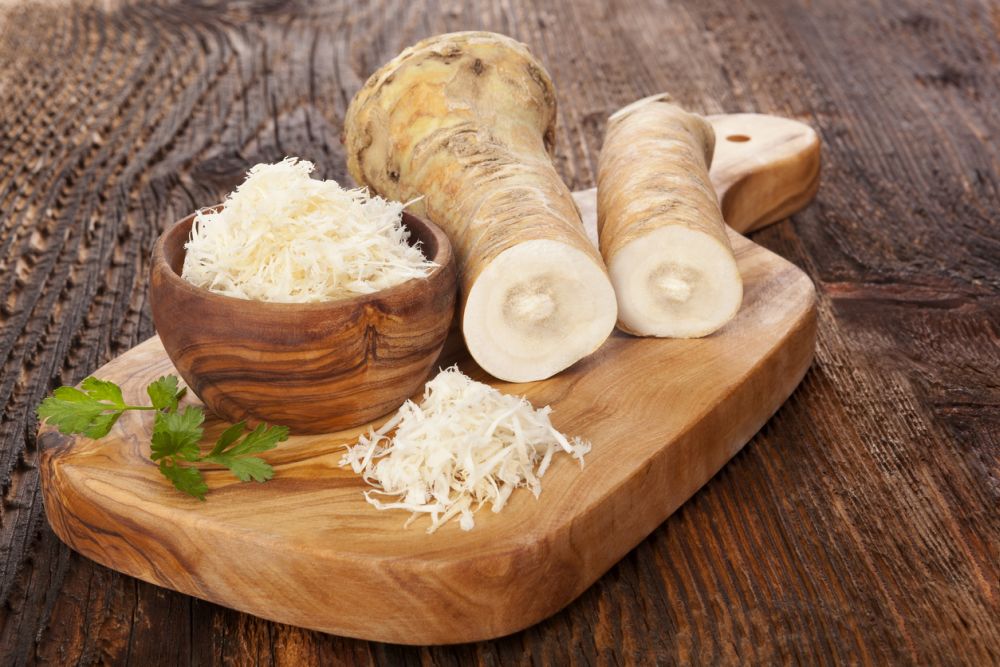
Horseradish is a good substitute for dry mustard as they both have a spicy taste. Both belong to the cruciferous family and can be used as spices or condiments in cooking.
When using horseradish in place of dry mustard, it can be fresh, dried or powdered. To prepare fresh horseradish, you must chop or grate it. Since it stings like an onion, it’s best to use a food processor.
Horseradish has a stronger, pungent taste and aroma than dry mustard, so use it in moderation. Start with half the amount of dry mustard called for in the recipe and add to taste. For example, If the recipe calls for 1 tablespoon dry mustard, use 1/2 tablespoon horseradish, to taste and add more if desired. To reduce its strength, mix horseradish with distilled vinegar before adding it to your dishes. Freshly grated horseradish loses its flavor and aroma with heat and air, so add it towards the end of cooking. It’s perfect for sandwiches, mayonnaise, mustard, and sauces.
6. Wasabi Powder
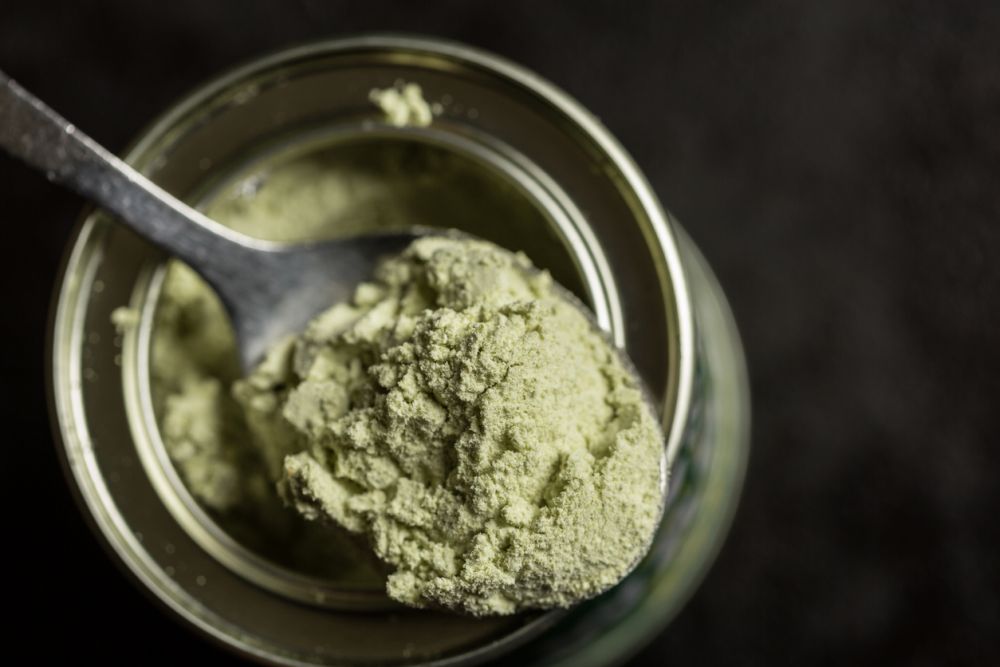
Mustard powder is a good substitute for dry mustard as it has a similar strong taste. However, it is a bit spicy. Like mustard, mustard belongs to the cruciferous family. It also has a strong flavor similar to wasabi and horseradish.
When substituting dry mustard, you can use mustard in both dry and powdered forms, depending on what you have available at the store. The powder form has a longer shelf life (3-4 years). Because it is hotter than dry mustard, Start with a pinch of mustard powder for added flavor.
7. Turmeric + Paprika
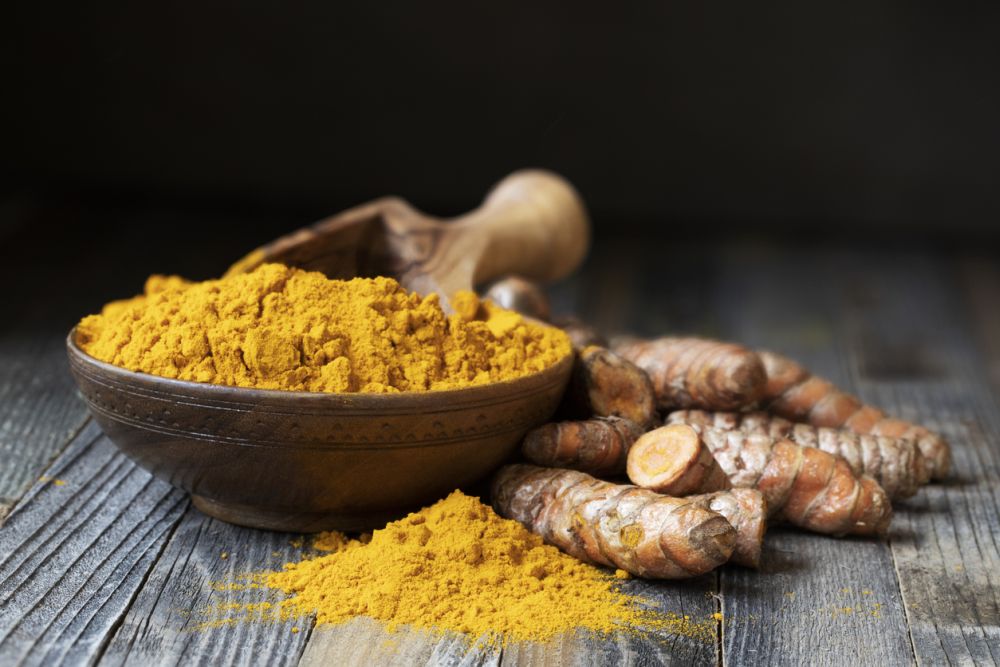
If you don’t have dry mustard, turmeric powder and paprika are good substitutes。 Turmeric powder adds a warm, earthy, slightly bitter flavor, while paprika provides heat and spiciness.
To make a substitution, keep the same proportions and mix turmeric powder with a pinch of cayenne. For example, If the recipe calls for 1 tablespoon dry mustard, use 1 tablespoon turmeric powder and 1/4 teaspoon paprika.
common problem
Learn more about dry mustard substitutes in cooking.
Can I use regular mustard instead of dry mustard?
YesBut it’s best to reserve regular mustard as a last resort because it has a much milder flavor so your dishes won’t have the same spiciness.
What is the difference between mustard and dry mustard?
Both mustard and dry mustard come from the same plant, but they are used differently in cooking。 Mustard is usually made by grinding mustard seeds with vinegar or other liquid to create a paste or sauce that can be used as a condiment or topping in recipes. Dry mustard, on the other hand, is simply mustard seeds that have been dried and powdered. It has a stronger flavor than prepared mustard and is used in rubs, marinades, dressings, and sauces. While both types of mustard add a rich flavor to dishes, dry mustard tends to impart more of a kick due to the higher concentration of mustard oil.
How do you make dry mustard?
To make dry mustard, first choose the type of mustard seeds you want to use. Yellow and brown mustard seeds are the most commonly used varieties. Toast the seeds in a dry pan for a few minutes until they are fragrant, then grind them in a spice grinder or mortar and pestle until they form a fine powder. If you want to make your dry mustard less pungent, mix it with flour or cornstarch and store it in an airtight container. You can also add other spices like turmeric, garlic powder or paprika to customize the taste of dry mustard.
What are the ingredients in mustard?
mustard usually includes Mustard Seeds, Vinegar, Water, and Salt. Some variations may also include sweeteners or other spices such as turmeric or paprika.
Is mustard powder the same as dry mustard powder?
Yes, mustard powder is the same as dry mustard powder. It also has mustard powder.
Can you use prepared mustard instead of dry mustard?
Yes, you can use dry mustard instead of prepared mustard. The best mustard for dry mustard is Dijon mustard.
in conclusion
Dry mustard is a versatile ingredient that adds depth and flavor to any dish. However, if you find yourself without it in your pantry, there are several viable alternatives. The best are mustard seeds, Dijon mustard, yellow mustard, stone ground mustard, horseradish, mustard powder, and a mixture of turmeric powder and paprika. Feel free to experiment with these options to find the best combination for your cooking preferences.

